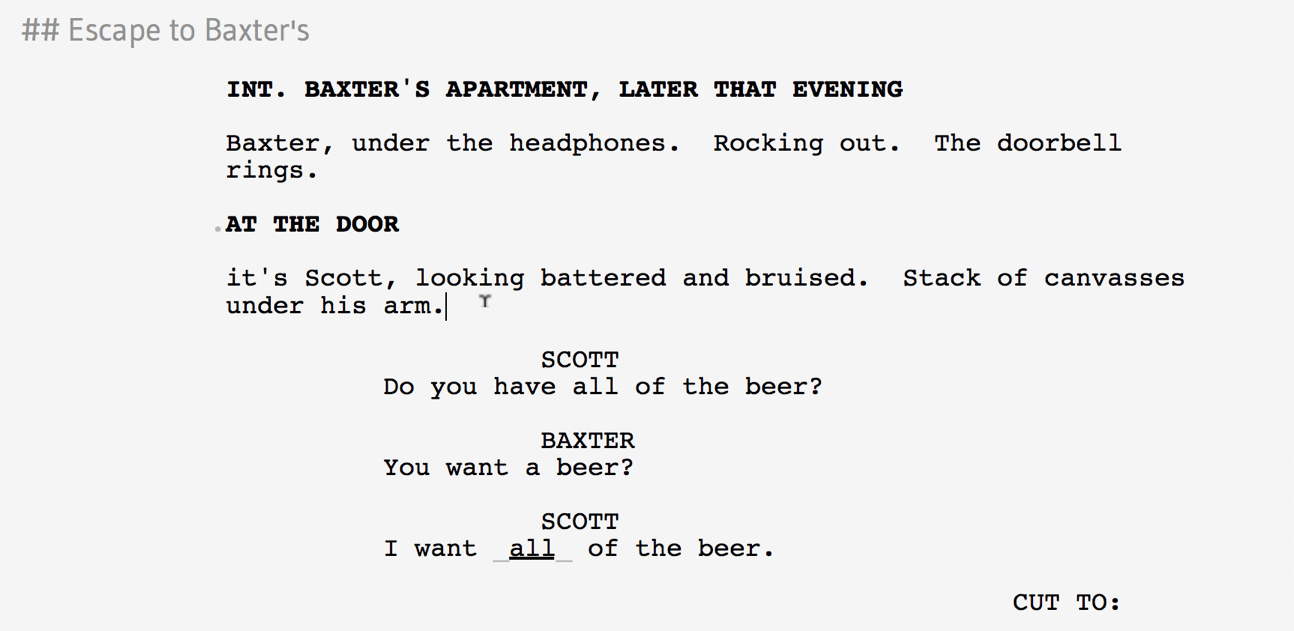

And nowhere is its strangeness more apparent than the formatting. Screenwriting is an odd form: half stageplay and half technical document, somewhere between art and craft. My initial ambition in writing the IMDb column, and then in creating the site, was to answer a lot of the questions I had when I was first starting out. This site caters largely to aspiring screenwriters new to the profession. For simple formatting questions, you can visit screenwriting.io. I think screenwriters are much better served by reading scripts of produced films, which you can easily find online.
#Slugline app number scenes automatic update#
Update in February 2021: I no longer recommend (or half-recommend) this book. JanuFormatting, General, Resources, So-Called Experts Ninety percent of users will probably only need the screenplay functionality, but you can now use Highland for a wide range of writing projects. A Certain Famous Author wanted to use Highland for manuscripts, so we built that in as well. We’ve added support for A4 paper sizes.Īnd we’ve expanded the types of documents you can create.įor Big Fish, I needed the ability to format stageplays. We’ve added syntax highlighting - a huge help with sections and notes. It’s fast and it works.įor version 1.5, it works even better. For the past few months, I’ve written everything new directly in Highland.

Surprisingly, a lot of people just wrote in Highland. (In fact, Nima Yousefi wanted to cut the editor view from version 1.0.) I wanted users to be able to make small changes without leaving the app, so we built a very basic text editor into the app. We thought screenwriters would use other text editors to write, then finish in Highland. When we launched, we saw Highland as a “screenplay utility” focused on converting between PDF, Fountain and FDX formats. The biggest change is honestly philosophical.


 0 kommentar(er)
0 kommentar(er)
